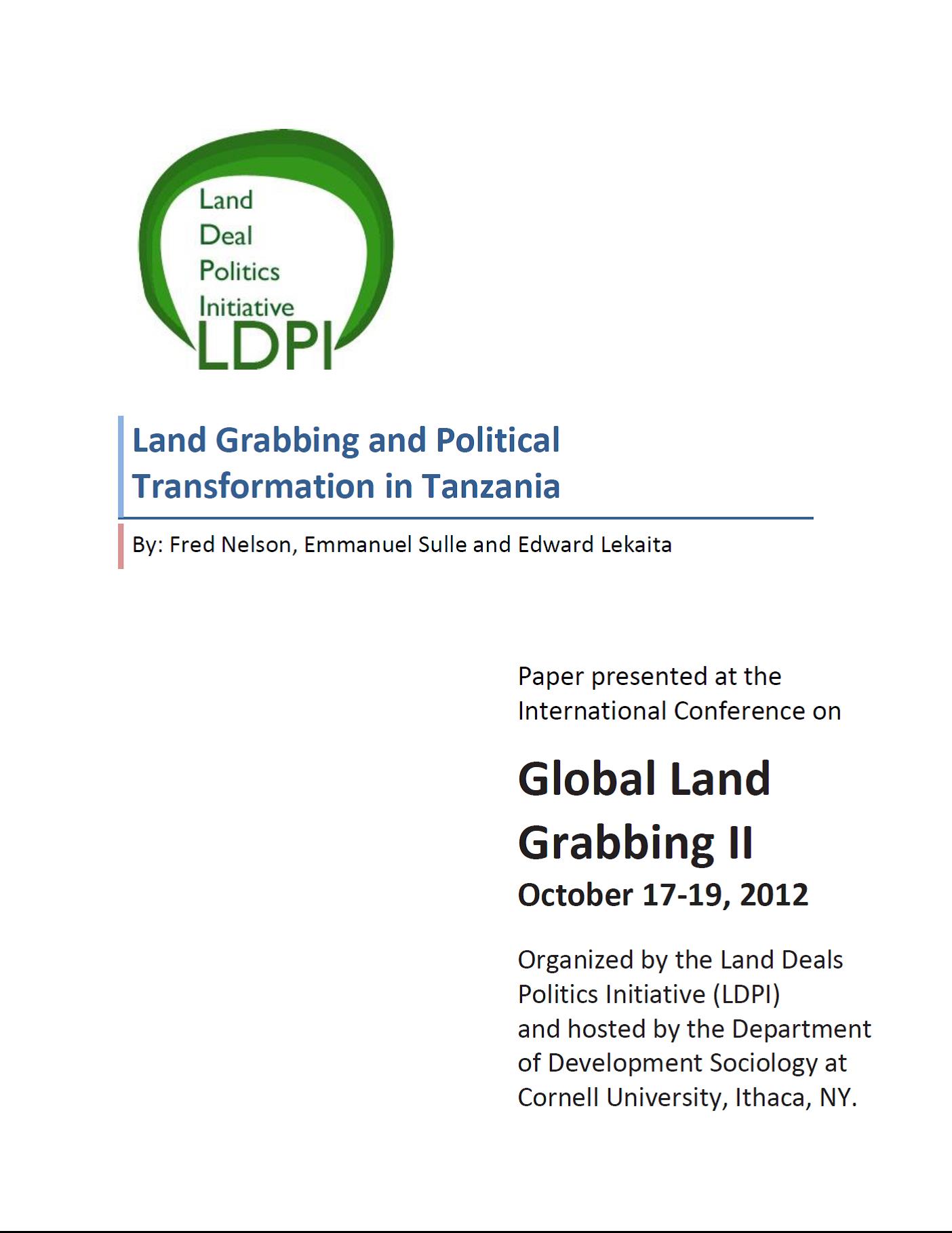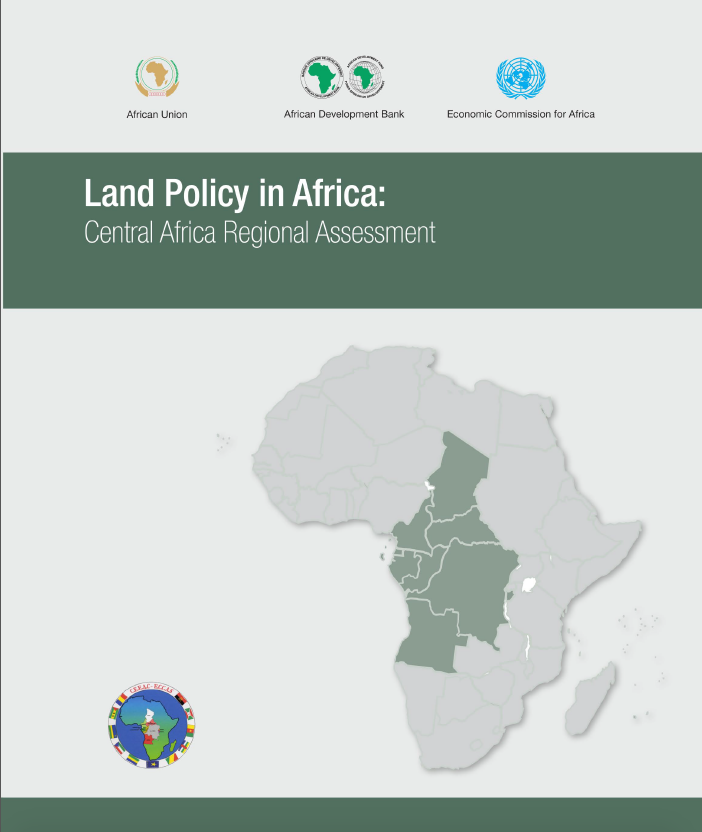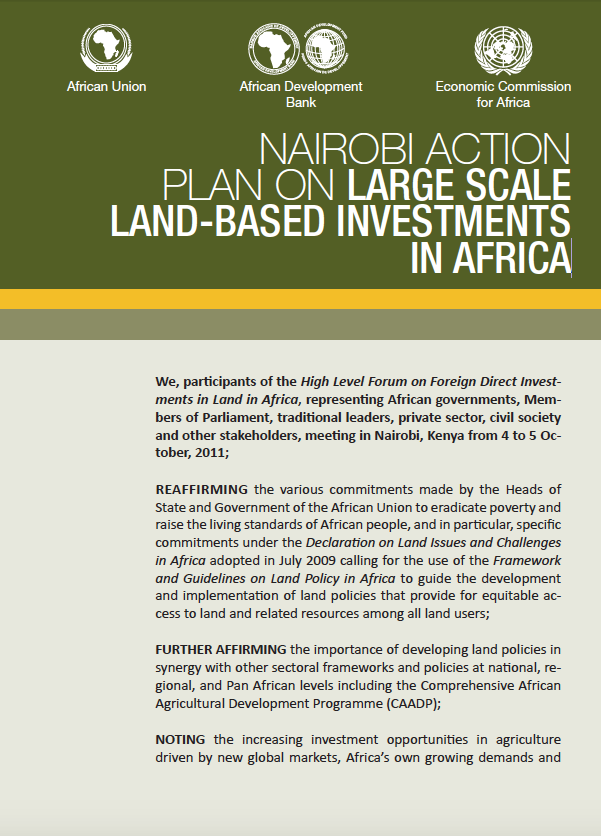Location
The African Land Policy Centre, formerly called the Land Policy Initiative (LPI), is a joint programme of the tripartite consortium consisting of the African Union Commission (AUC), the African Development Bank (AfDB) and United Nations Economic Commission for Africa (ECA). Its purpose is to enable the use of land to lend impetus to the process of African development. The programme is governed by a Steering Committee that meets periodically, while a joint secretariat implements day to day activities. The secretariat is assisted by an African Taskforce on Land.
After having developed the Framework and Guidelines (F&G) on land policy in Africa, and received the mandate from the African Union (AU) to use it in support of national and regional land policy processes, the LPI is now moving towards assisting AU Member States in developing or reviewing their land policies as well as in implementing and evaluating these policies.
Vision
A peaceful and prosperous Africa realized through equitable access, efficient and sustainable utilization of land.
Mission
To ensure all land users have equitable access to land and security of all bundles of land rights, by facilitating effective partnerships, dialogue and capacity building for participatory and consultative land policy formulation and implementation, as well as efficient and transparent land administration in both customary and statutory jurisdictions.
Goal
To assist Member States in the implementation of the declaration on land issues and challenges in Africa in accordance with the Framework and Guidelines on land policy in Africa in order to achieve socio-economic development, peace and security, and environmental sustainability.
Current targets of the initiative include:
Twenty Member States developing land policies and adopting implementation tools that enhance women’s secure access to land; and recognize the legitimacy of Africa’s customary based land rights and institutions by 2020
Ten Member States putting in place transparent, efficient and cost-effective Land administration systems which are reflective of Africa’s unique realities by 2020
Members:
Resources
Displaying 6 - 10 of 35Land Grabbing and Political Transformation in Tanzania
Like many of its neighbors, Tanzania is experiencing a well-documented surge of land grabbing related to investments in industries such as agriculture, biofuels, tourism, hunting, and forestry. Land grabbing in Tanzania is best understood and analyzed as both a symptom of and contributor towards wider political economic processes of change occurring in Tanzania.
Land Policy in Africa: Central Africa Regional Assessment
The Central African region includes Angola, Burundi, Cameroon, Central African Republic, Chad, Congo, Democratic Republic of Congo, Equatorial Guinea, Gabon, Sao Tome & Principe. The region is characterized by its high diversity, as it reflects all types of ecosystems of the continent. The region is most known as hosting one of the world’s richest forest biodiversity as well as valuable natural resources such as mineral resources and oil. The population of Central African region was estimated at some 121 000 000 inhabitants in 2007. However this population is unevenly distributed.
Land Policy in Africa: Central Africa Regional Assessment
The Central African region includes Angola, Burundi, Cameroon, Central African Republic, Chad, Congo, Democratic Republic of Congo, Equatorial Guinea, Gabon, Sao Tome & Principe. The region is characterized by its high diversity, as it reflects all types of ecosystems of the continent. The region is most known as hosting one of the world’s richest forest biodiversity as well as valuable natural resources such as mineral resources and oil. The population of Central African region was estimated at some 121 000 000 inhabitants in 2007. However this population is unevenly distributed.
Nairobi action plan on large-scale land based investments in Africa
Nairobi action plan on large-scale land based investments in Africa
Nairobi action plan on large-scale land based investments in Africa
Nairobi action plan on large-scale land based investments in Africa




